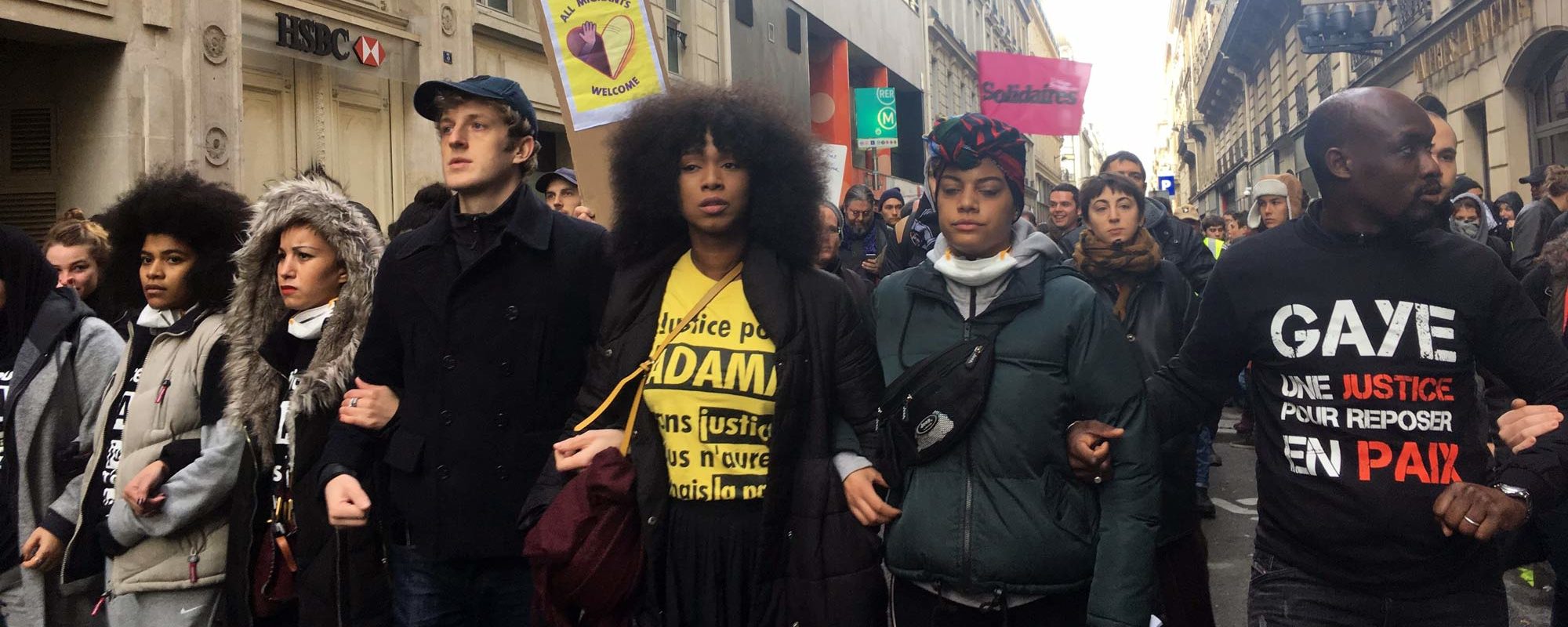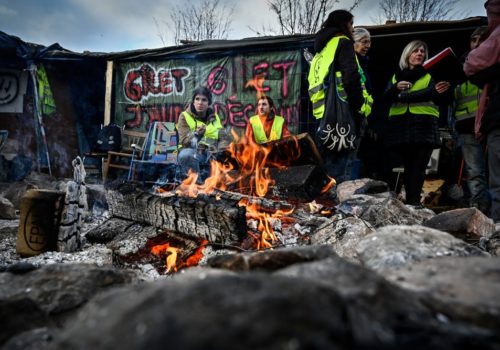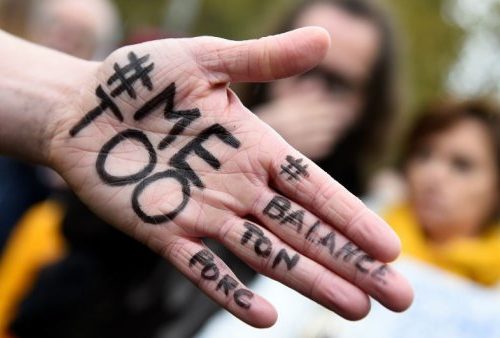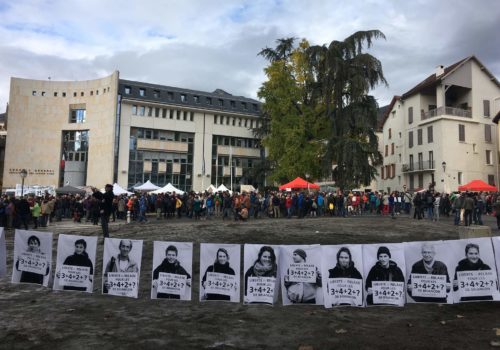PARIS — When the French president, Emmanuel Macron, addressed the nation Monday night to break his silence about the “Yellow Vest” demonstrations that have rocked France since mid-November, he was hardly the only one at pains over how to respond. In a country accustomed to protests, politicians and pundits alike have struggled to categorize a leaderless movement that has taken to the streets for four consecutive weekends in a row and is expected to continue through the end of the year.
Named after the high-visibility yellow safety vests all motorists are required to keep in their cars, the demonstrations initially broke out in response to a fuel tax aimed at curbing fossil-fuel emissions. Violent spurts have punctuated what have been mostly peaceful protests. Over the past four weekends, thousands have mobilized across western Paris, targeting its most luxurious and commercial neighborhoods; in towns across the country, protesters have blocked traffic roundabouts.
The government acquiesced to the protesters’ original demand to scrap the fuel-price hike after the third week of protests, with little calming effect. That’s because the movement has transformed into a broader expression of popular frustration, not just with Macron’s right-leaning economic policies but with the president himself, considered aloof and out-of-touch with the working classes.
In an unusual convergence, the protests have rallied traditionally distant segments of society—notably, the rural and urban poor, two populations that suffer similar economic hardships but are often opposed politically—behind common outrage. That rapprochement, however temporary, is forcing the president to show his cards. In the weeks and months to come, he will have to demonstrate whether he is the unifying new kind of leader he has promised to be, or falls back on old traditions that have prompted social divisiveness for decades.

When the protests began, the media relayed reports of far-right figures in their ranks; that, coupled with the hostile reaction to a measure designed to fight climate change, gave the impression that the Yellow Vests would be the latest populist, right-wing shift to shake Europe.
That hasn’t entirely turned out to be the case. The fourth mobilization in Paris—on Saturday, Dec. 8, and under tight security, with 8,000 police officers deployed in the capital alone—illustrated the movement’s heterogeneity.
“Macron managed to bring people together—there’s a certain fraternity that we feel on the ground, between different groups of people,” Benjamin Belaidi, one of the early organizers of the Yellow Vest movement, told me. “We’re together, and we’re putting aside our political ideas, and it’s the first time I’ve seen this happen. Everyone is a Yellow Vest.”
That hasn’t been the case throughout the movement, however. “We come with our particularities, with our own combats,” Belaidi said. “We can’t put that aside, but we can try to make compromises, without compromising our identities.” He mentioned that Yellow Vests in Compiègne, where he lives about 90 minutes from Paris, had declared that “political or religious signs” wouldn’t be authorized at protests. “What’s that supposed to mean?” he said. “That a women wearing a headscarf can’t join?”

In the chaos of last Saturday’s protest, I ran into Édouard Louis, a prolific and internationally known young author who has written extensively about rural poverty. He attended Saturday’s march with Justice for Adama, a collective founded in 2016 following the murder by police of Adama Traoré, a 26-year-old black man, in a Paris banlieue—one of the city’s low-income suburbs, home to significant immigrant populations.
“This movement is very new, powerful, and radical,” he told me, raising his voice over the slogans—“Macron, resign!” “No Justice, No Peace!”—chanted around us. “It’s coming from people who really suffer, whose livelihoods are precarious, who live in poverty, who are excluded from society, and who face police violence.” There may be a “strong core” of far-right activists in the movement, he added, but that should only galvanize those on the left, especially from the banlieues, to take to the streets.
“The political class—including a certain part of the left—has abandoned the working class,” Louis said. Rather than focusing on poverty, he explained, politicians have offered platitudes about “vivre ensemble”—the overused, somewhat empty phrase that roughly means “living together”—as a way to distract from mounting inequality and promote the ideal of a society united by its values.
The myth of vivre ensemble has been central to the debates over national identity and laicité, or French secularism, that have become a centerpiece of public discourse since the 1980s. “It’s been a way to pacify society,” Louis said—that has proved ineffective.
We started backing away from the crowd—a cloud of tear gas wafting in the distance seemed to be coming our way. The Yellow Vests, he said, could inspire a more concrete form of vivre ensemble, based on the quest for economic justice. “It’s the real that’s emerging,” he said, emphasizing the policy-oriented nature of the protesters’ demands A tear-gas canister landed at our feet, and we ran in different directions.

For the past year, I’ve explored consecutive French governments’ attempts to create a universal society of equal citizens, notably through its prized laïcité. I’ve discovered that those strategies have actually prompted more division than unity, especially for the ethnic and religious minorities considered in need of integration. Now, otherwise disparate populations have come together behind the Yellow Vest movement—united by nothing else but disgust for Macron.
The shift may prove fleeting, but the current moment’s particularity is undeniable. When I arrived at the Saint-Lazare train station Saturday morning, protesters gathered with placards denouncing phenomena as vast as capitalism, patriarchy and racism. That left-leaning, anti-system denunciation of structural inequality isn’t the Yellow Vests’ defining ideology, but its presence is important.
Macron’s speech on Monday showed that the Yellow Vests’ demands—and the nuanced scope of the movement—have fallen on deaf ears. Figures on the left and right consider his concessions—a $100-euro monthly increase in the minimum wage, and a slash on overtime and some pension taxes—woefully insufficient, only confirming his image as the “president of the rich” earned early in his term.
If the crux of his too little, too late address to the nation seemed to confirm his elitist reputation, one aspect raised eyebrows. In parallel to the “state of economic and social emergency,” the president shifted the tone. He recognized, he said, the “malaise” of French people “faced with changes to our society, a disrupted laïcité, and lifestyles that create barriers and distance.” With that, he urged the nation to “come to an agreement about its profound identity, and to address the question of immigration. We need to confront it.”
When a president uses the words “identity” and “immigration”—themes will little link to the protests’ economic focus—it doesn’t go unnoticed. Many saw it as the latest example that Macron’s radical centrism actually represents a rightward shift. It harked back to the era of Nicolas Sarkozy, the center-right president who seized the 2005 riots that broke out in the banlieues—the last popular mobilization on the scale of the Yellow Vests—to open a debate about “national identity,” tantamount to a political push to “better integrate” French Muslims.
The parallel, it turns out, may not have been so farfetched: Macron had met with Sarkozy on Dec. 7, just days before his address. Faced with the “concrete” social cohesion Édouard Louis described—a convergence of rural and urban, black, white or Arab, around nothing other than shared economic grievances—it seems that Macron may choose to simply fall back on the divisive rhetoric that has plagued France for decades.




